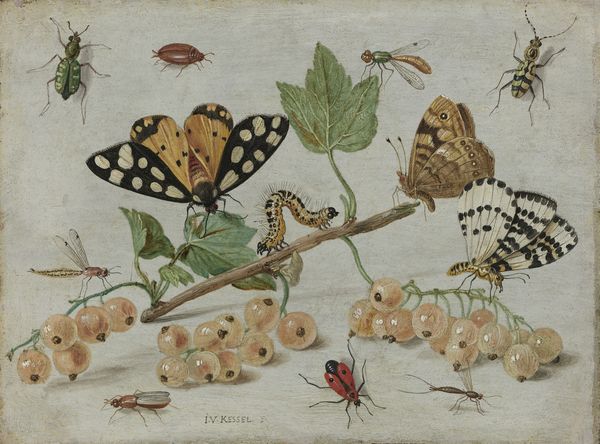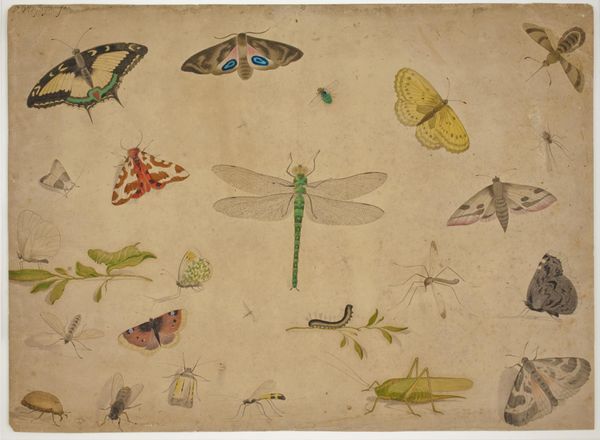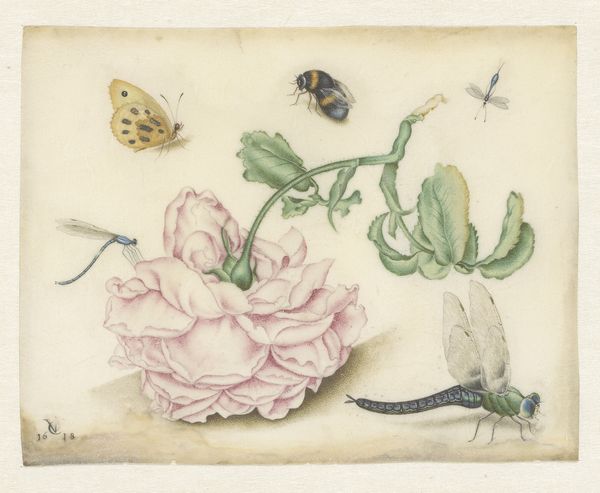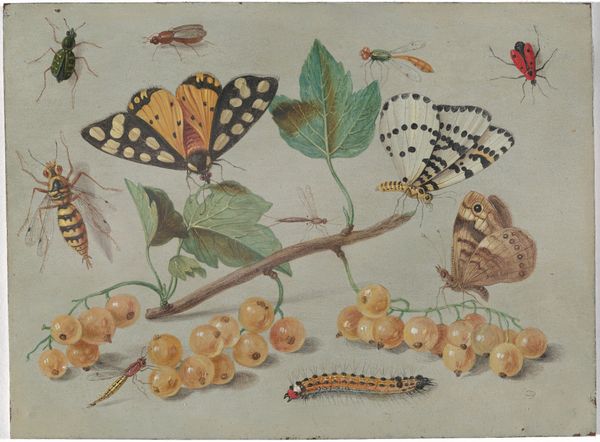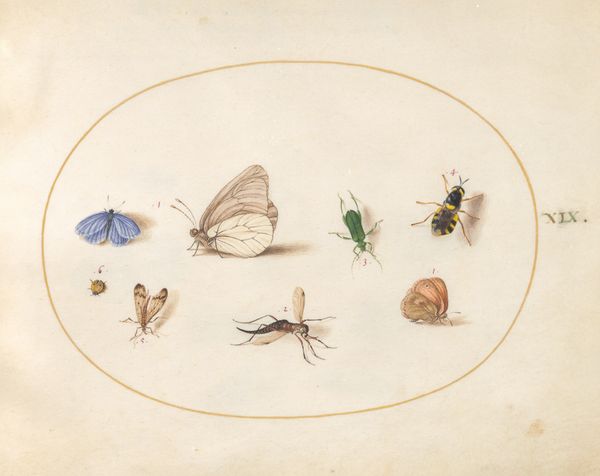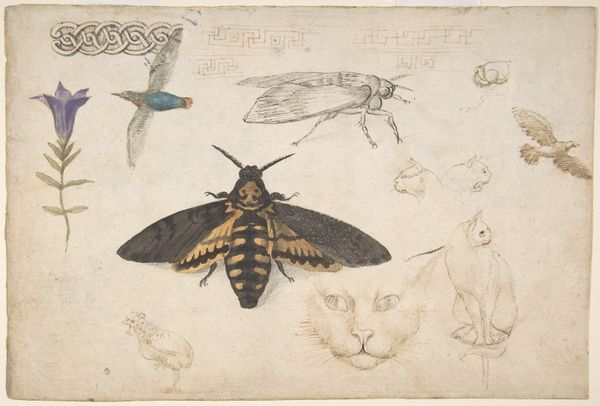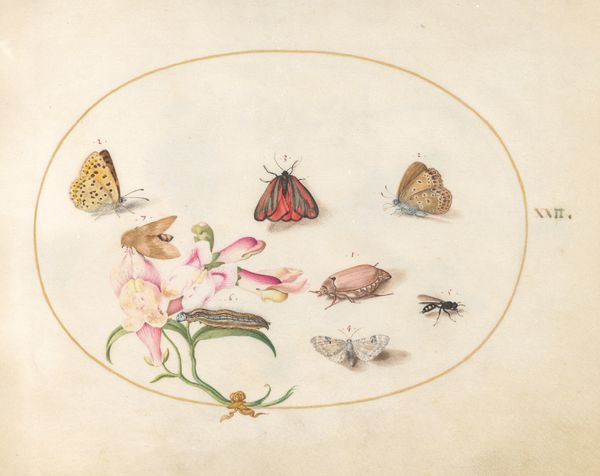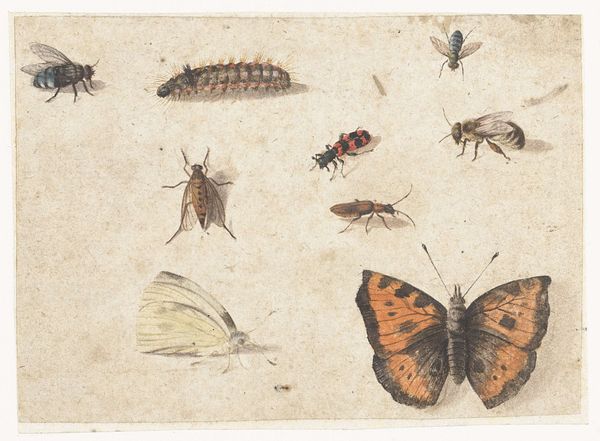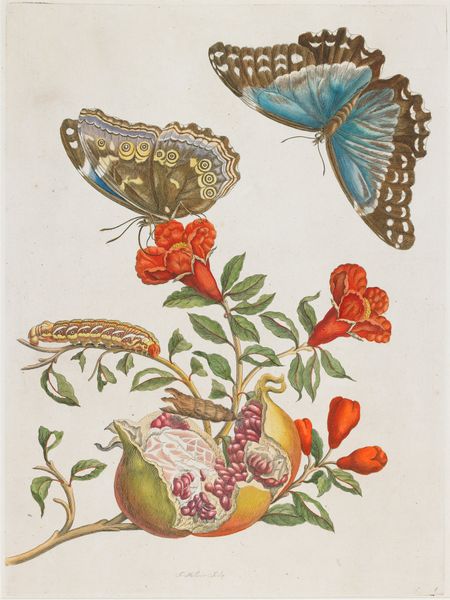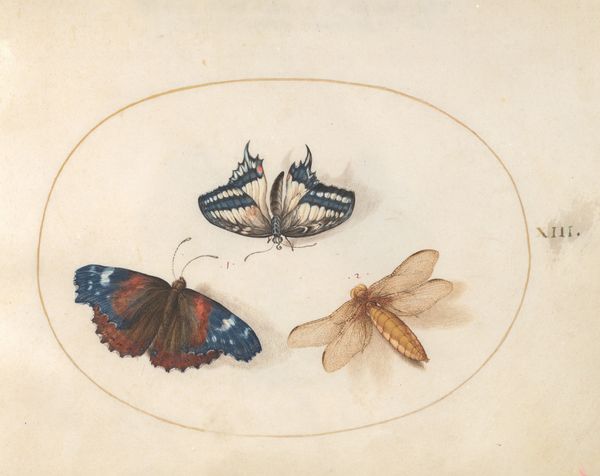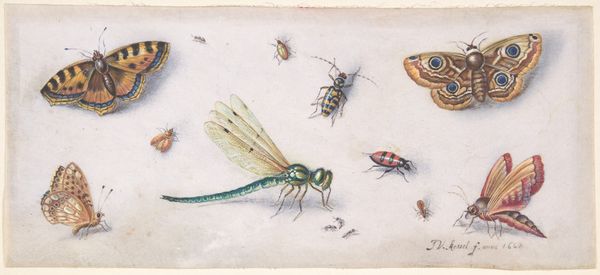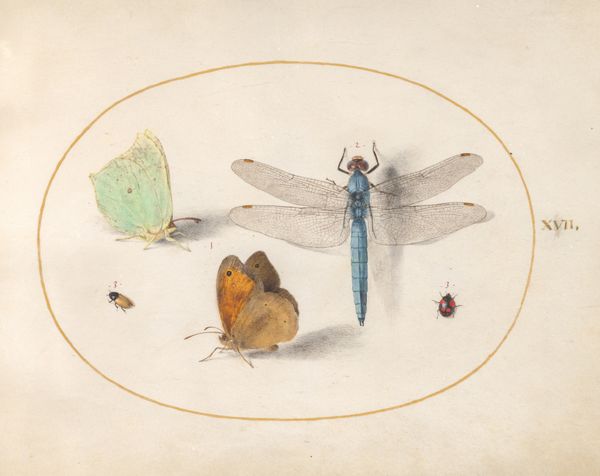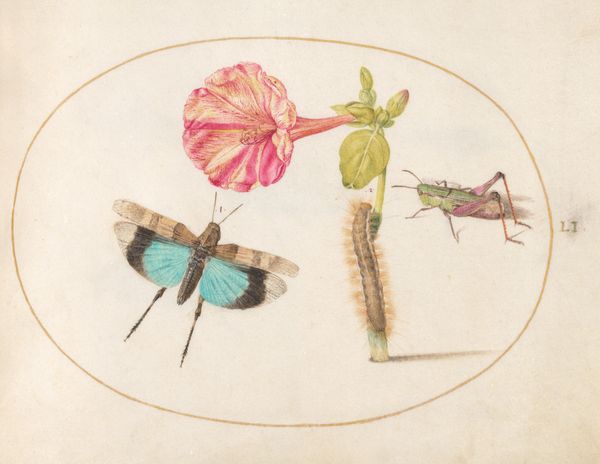
painting, oil-paint
#
water colours
#
baroque
#
dutch-golden-age
#
painting
#
oil-paint
#
oil painting
#
watercolor
Dimensions: overall: 11.5 × 14 cm (4 1/2 × 5 1/2 in.)
Copyright: National Gallery of Art: CC0 1.0
Curator: This is "Insects and a Sprig of Rosemary" created by Jan van Kessel in 1653, a rather charming microcosm captured in oil on panel. Editor: My first thought? Delicate. There's something so intimate about the way these little creatures are rendered. A reminder that even the smallest beings have their own kind of beauty and drama. Curator: Precisely! Kessel’s talent lies in elevating the often-overlooked. This piece comes from a period where the detailed observation of the natural world was incredibly valued – science and art were dancing close together. It’s classic Dutch Golden Age, full of that desire to classify and showcase. Editor: But I think there's also a powerful reminder of human ambition woven in. Collecting, classifying, wanting to dominate our natural world and render it docile. It strikes me as so timely to interrogate that impulse! What does it mean to "own" and control these tiny living beings, immortalized by paintbrush in a painting? Curator: Ooh, an interesting point! On the surface it is all observation, right? I mean, look at the almost obsessive detail – the way the light catches the wing of the butterfly, the fuzz on the bee... it almost feels reverential to me! It reminds me of childhood wonder, peering closely at the hidden worlds of a garden. But, I like that you have called me on this point! Perhaps the collecting impulse of humans isn’t something that we always do without an impact to the other members of our ecosystems. Editor: Definitely! And think about what we valorize with “still life”—are we inviting a space to reckon with issues of ecology and environmental justice? Can this piece of art make space to reflect on insect populations in crisis as a result of monoculture farming or light pollution? Curator: Food for thought indeed! There’s this wonderful sense of discovery and it almost prompts an imaginative exploration, like entering a magical miniature world where everything has a story to tell. Even if the story is tinged with colonialism! Editor: And that is why the work remains powerful and unsettling! This little panel manages to stir a potent brew of appreciation, historical understanding, and ethical questions about humanity’s relationship with nature.
Comments
No comments
Be the first to comment and join the conversation on the ultimate creative platform.
